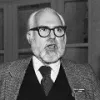The Great Subversion
In Rome, during the Second Punic War (218–201 B.C.), a secret and very powerful movement was accidentally discovered just in time to save Rome from a violent revolution and destruction.

- R. J. Rushdoony
(Reprinted from Bread Upon the Waters: Columns From The California Farmer [Fairfax, VA: Thoburn Press, 1974], 11–12.)
In Rome, during the Second Punic War (218–201 B.C.), a secret and very powerful movement was accidentally discovered just in time to save Rome from a violent revolution and destruction. Most of Rome’s leadership had been marked for death. This cult or revolutionary movement, Bacchanalia, had a simple creed: “The holiest article of their faith was to think nothing a crime.” Members proved their faith by committing all kinds of sexual crimes.
Similar movements have appeared over and over again in history, and many which are centuries apart are still closely connected. Many such movements were student movements. During the later middle ages, wandering students, who went from university to university without ever really graduating, were known as Goliards. These Goliards were what we would call folk-singers, and their music had a continual hostility to Christian morality and law. These students were more interested in destroying civilization than in studying, and many rarely saw a classroom.
In the 19th century Russia, the Nihilists, who believed in nothing but revolutionary Socialism, were the radical students of the day. The men wore their hair very long, and the women cut their hair very short. Blue spectacles were often worn as a kind of badge. Everything about their appearance and conduct was calculated to be offensive and to show their contempt for and indifference to Christian faith and morality. The intellectuals of the day were very much in sympathy with these students.
We have such students with us again. But, more than that, we now have universities dedicated to creating such students. In early May 1965, the Center for the Study of Democratic Institutions held a conference for 1400 college presidents, deans, professors, and trustees in Los Angeles. The speakers included Robert M. Hutchins, Walter Lippman, U.S. Supreme Court Justice William O. Douglas, and U.C. President Clark Kerr. The feeling of the conference was that the university should spend less time on research and more on influencing voters and remaking the country. And English educator Sir Eric Ashby emphasized as the first purpose of any university revolution: “The true function of a university is not to preserve and consolidate the social status quo but to question and disrupt it.” The real purpose of education is thus continual revolution!
The roots of this movement go back to Eden. Satan’s temptation was, “[Y]e shall be as gods, knowing good and evil” (Gen. 3:5). In other words, every man shall be his own god and his own law, knowing or deciding for himself what is good and evil. If there is no sovereign God over all creation, then there is no absolute law over all. If there is no law, then there is no crime, and anything goes. This is the simple foundation of all these movements: No God means no law and no crime; therefore, everything goes! All these and whoever stands with them. For the world is under God’s law, and St. Paul’s warning still stands: “Be not deceived; God is not mocked: for whatsoever a man soweth, that shall he also reap” (Gal. 6:7).

- R. J. Rushdoony
Rev. R.J. Rushdoony (1916–2001), was a leading theologian, church/state expert, and author of numerous works on the application of Biblical law to society. He started the Chalcedon Foundation in 1965. His Institutes of Biblical Law (1973) began the contemporary theonomy movement which posits the validity of Biblical law as God’s standard of obedience for all. He therefore saw God’s law as the basis of the modern Christian response to the cultural decline, one he attributed to the church’s false view of God’s law being opposed to His grace. This broad Christian response he described as “Christian Reconstruction.” He is credited with igniting the modern Christian school and homeschooling movements in the mid to late 20th century. He also traveled extensively lecturing and serving as an expert witness in numerous court cases regarding religious liberty. Many ministry and educational efforts that continue today, took their philosophical and Biblical roots from his lectures and books.